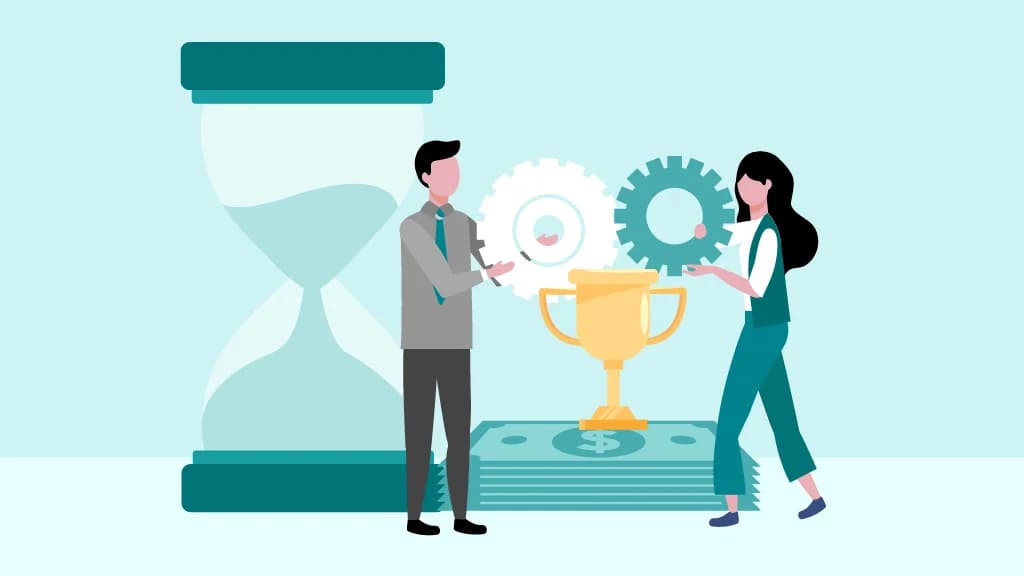
Team AdvantageClub.ai
April 11, 2025

One constant in the current ever-evolving workplaces is that the success of any organization is decided by how happy, motivated, and productive its people are. That is why a well-organized Rewards and Recognition(R&R) program is critical for maintaining a thriving company. But wait, there’s more.
The Rewards and Recognition cycle is a constant process of celebrating and acknowledging employee contributions, successes, and behaviors corresponding to the company’s values and goals. It is a two-way street, with employees giving their all and employers expressing gratitude.
A well-structured Rewards and Recognition program emerges as a non-negotiable component in cultivating a thriving workplace. An excellent R&R program does more than simply recognize employees for their efforts. It also aids in their professional and personal development. According to a recent Deloitte survey, 89% of employees believe recognition is vital for job happiness. It increases their enthusiasm, motivation, and productivity, resulting in a more positive and successful work environment.
The significance of the Rewards and Recognition cycle is not dependent solely on intuition. Implementing an effective R&R program can assist employees in recharging and rejuvenating themselves, improving morale and productivity, and contributing to a more positive work atmosphere. Appropriate implementation strategies are critical for reaping the multi-faceted benefits of a successful Rewards and Recognition.
Rewards and Recognition cycle
Employee contributions, successes, and behaviors that correspond with the company’s values and goals are recognized and appreciated through R&R programs. The Rewards and Recognition in a company often begins with formal or informal recognition. Awards, certificates, and public announcements are examples of formal acknowledgment. Informal appreciation might be as basic as a handwritten note or a spoken thank you.
Employees who get recognition are more likely to be engaged and driven to continue performing well. This results in rewards, which can be monetary or non-monetary. Financial incentives can take the form of bonuses, increases, or stock options. Extra vacation days, flexible work arrangements, or opportunities for professional growth are examples of non-monetary benefits. Rewards help to reinforce desired behaviors and motivate your workforce to contribute to the company’s goals and success in the future. They also convey to employees the message that they are cherished and appreciated. Employees and employers both observe benefits from R&R cycles, which include:
- Employee engagement and motivation have increased
- Decreased turnover
- Morale and production have improved
- Increased inventiveness and creativity
- Improved company culture
- Customer satisfaction has increased
- Enhanced profitability
When done properly, these programs can contribute to a thriving workplace. High-performing organizations follow a systematic process of R&R.
Key elements of a successful Rewards and Recognition cycle
A successful rewards and recognition cycle is one that is well-designed, implemented, and assessed. Rewards and Recognition strategies must follow a systematic process of four phases to achieve the desired result. The four phases are assessment, design, execution, and evaluation.
1. Assessment
The first step in developing a successful Rewards and Recognition cycle is to assess your present workplace culture. Identifying your company’s values and goals, as well as the types of behaviors and contributions you want to recognize and reward, are all part of this process.
Once you have a thorough grasp of your existing situation, you can start developing a program that is suited to your organization’s specific needs. When developing your R&R program, keep the following aspects in mind:
- Types of rewards: What kinds of awards will mean the most to your employees? Financial incentives, such as bonuses and raises, are always popular, but non-monetary incentives, such as extra vacation days, flexible work arrangements, and professional development opportunities, can be just as successful.
- Recognition levels: Will you be recognizing individual efforts, team accomplishments, or both? It is critical to have a variety of recognition methods in place so that all employees can be honored.
- Recognition frequency: How frequently will you recognize and reward employees? Recognizing staff on a regular basis is most beneficial, so attempt to do so at least once a month, if not more frequently.
- Transparency and equity: It is critical that your Rewards and Recognition program be transparent and equitable. Employees should be aware of the requirements that must be met in order to be acknowledged and rewarded.
2. Design
After you’ve assessed your needs and created a plan, you can start designing your Rewards and Recognition program. This includes working on the following:
- Plan for communication: How will you inform staff about the Rewards and Recognition program? It is critical to present the program in a clear and simple manner, as well as to offer employees all of the information they require to participate.
- Requirements for recognition and reward: What are the exact requirements that employees must achieve in order to be acknowledged and rewarded? Check that the criteria are clear, measurable, and consistent with the values and goals of your company.
- Employee nomination and recognition: How will employees be nominated and recognized? Who will be in charge of approving and disbursing rewards? Make certain that the process is efficient and simple to follow.
3. Execution
It is critical to implement your R&R program once it has been designed effectively. This includes the following:
- Employee communication: Ensure that all employees are aware of the Rewards and Recognition program and how to participate.
- Employee nomination and recognition: Implement a fair and efficient employee nomination and recognition process.
- Reward distribution: Ensure that prizes are distributed on time and fairly.
4. Evaluation
It is critical to examine your R&R program on a frequent basis to ensure that it is achieving the desired results. When reviewing your program, keep the following aspects in mind:
- Employee involvement: Are employees taking part in the program? If not, then check why.
- Employee contentment: Are the staff pleased with the program? Do they believe the criteria for recognition and reward are fair and that the awards are meaningful?
- Business outcomes: Is the R&R program improving business outcomes like employee engagement, productivity, and morale?
If you discover that your R&R program is not achieving the desired results, make the necessary changes.
A cycle of rewards and recognition (R&R) is required for a flourishing workplace. Employees are more likely to be engaged, driven, and productive when they feel valued and acknowledged for their work. Furthermore, R&R programs can assist to reduce turnover, boost morale, and foster a more favorable work environment.
Keep in mind the four essential components of a successful rewards and recognition cycle: assessment, design, execution, and evaluation. You may build a program that suits the specific demands of your organization and accomplishes your targeted goals by carefully evaluating each of these factors.
Organizations can build a better workplace where employees are inspired and engaged by investing in well-designed and implemented incentives and recognition programs.






